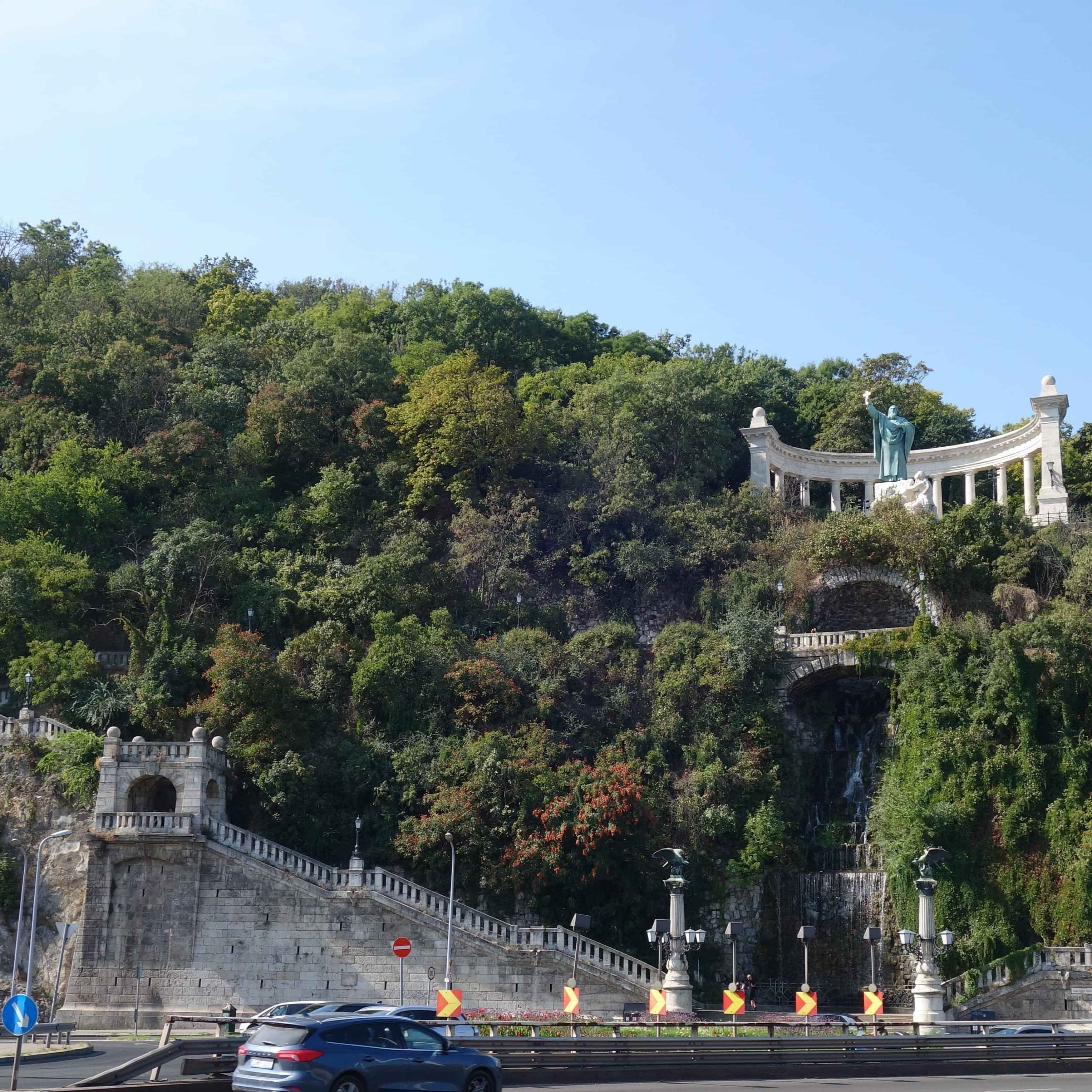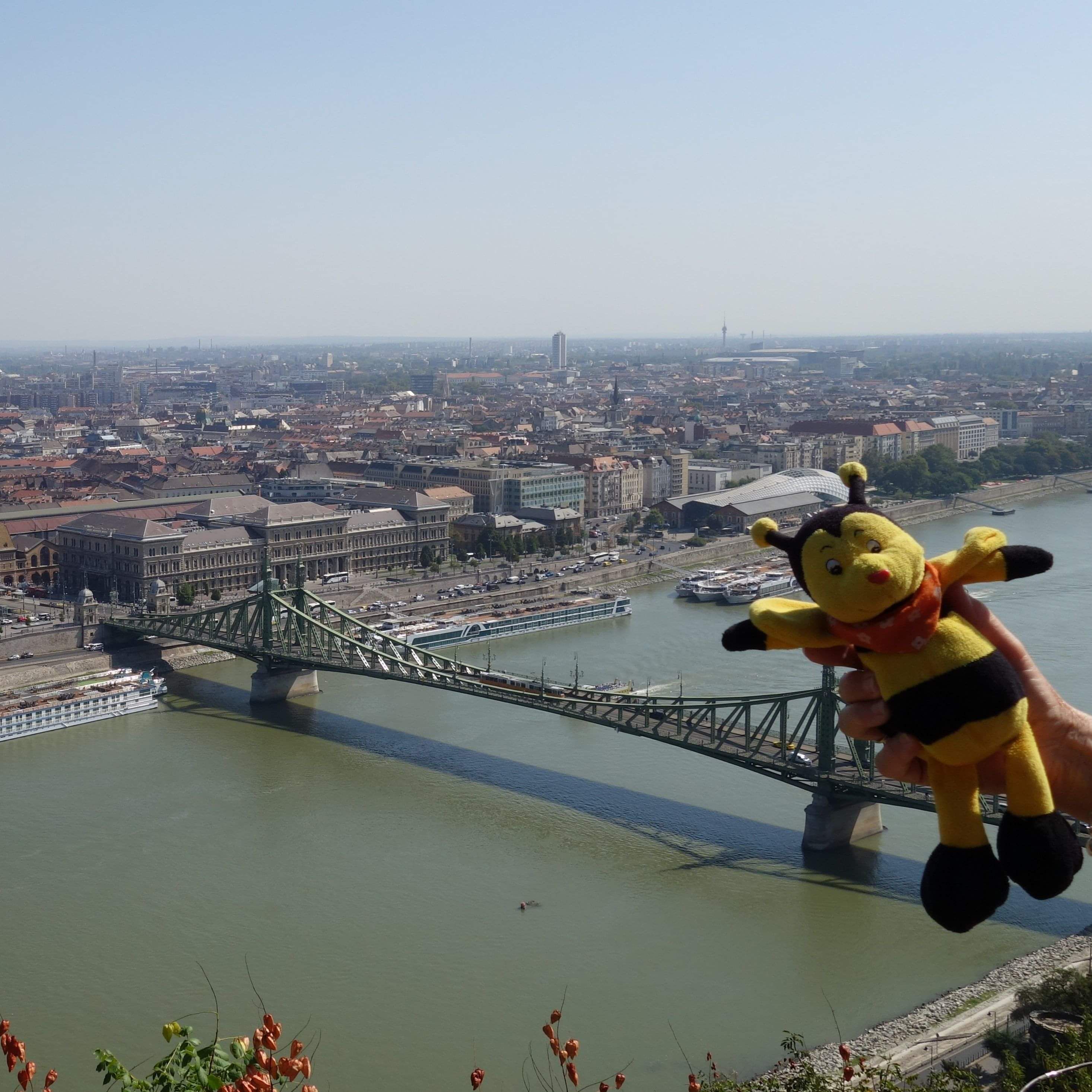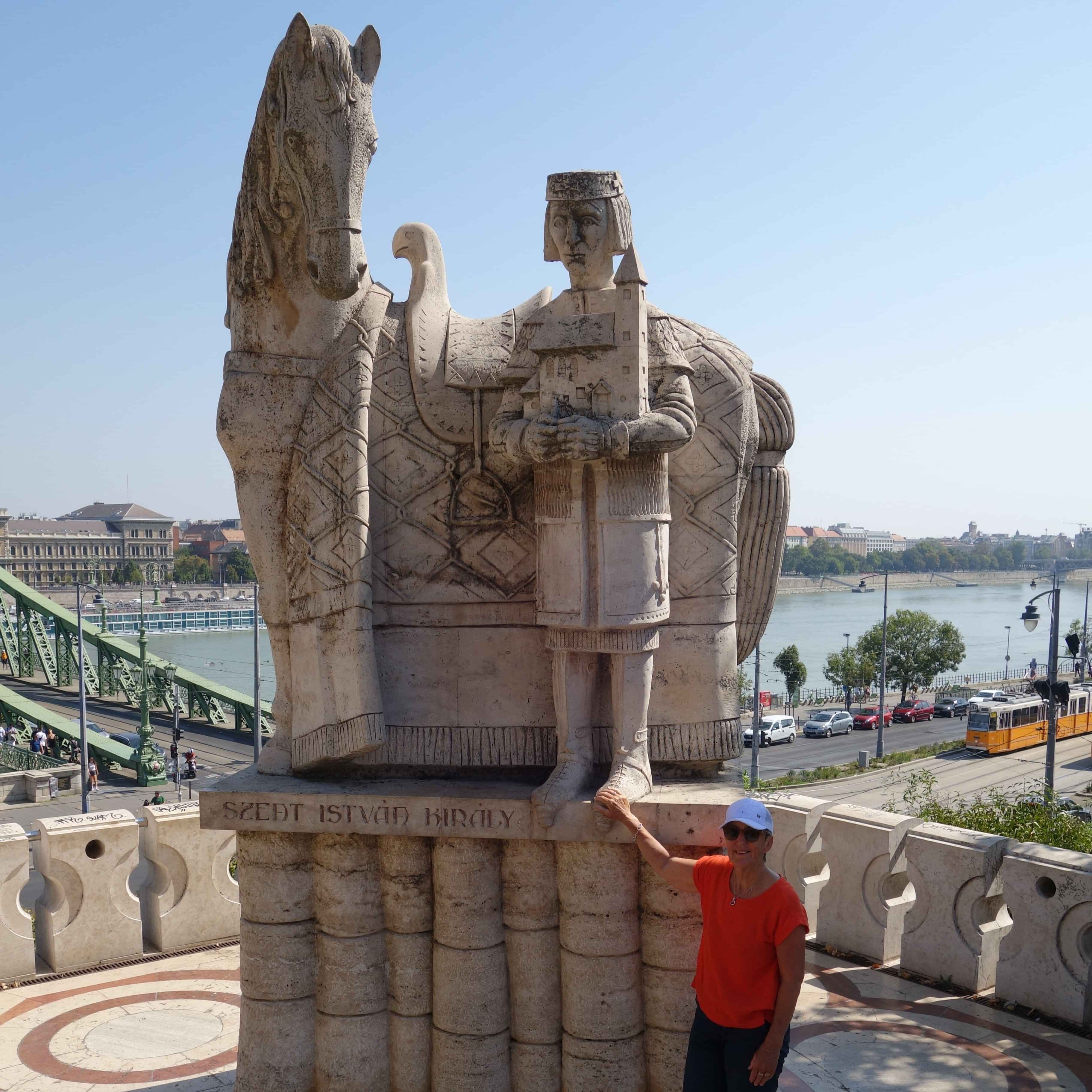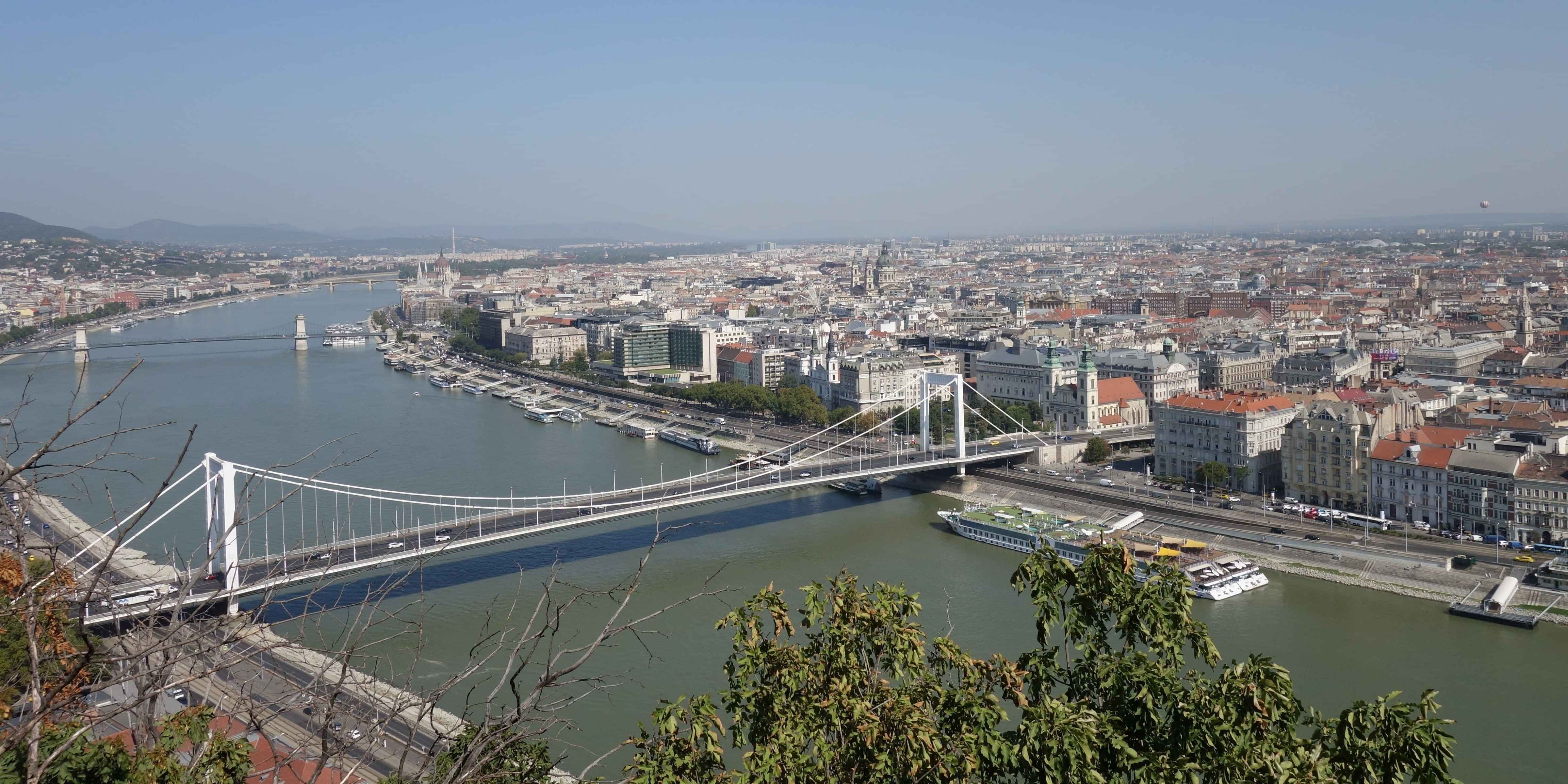Day 16
Hiking and Biking in Budapest
Wednesday, September 4, 2024
Jó reggelt kívánok,
Hiking Up Gellért Hill
This morning Grandma was in the mood for some exercise. When Grandma's in this sort of mood, Koro knows that he doesn't get a choice!
Sitting high atop Gellért Hill is the Citadella, a fortress built in the early 1850's. The Cittadella suffered damage during both World War II and the Hungarian Uprising of 1956. Since then the interior has been closed while the Cittdella's fate was decided.
Restoration of the damaged Cittadella has fallen under the auspices of the National Hauszmann Programme. That is the same program that is restoring the damaged and destroyed buildings of Buda Castle. Like the Buda Castle complex, the top of Gellért Hill it is currently a construction worksite that is closed off from the public.
We thought the climb was well worth the effort, Grandma particularly so. The views over Budapest were stunning. Grandma was also stunned by the quartet of very fit looking young men who were not wearing shirts. The topless young men were also walking up the hill. Koro tried valiantly to suck in his tummy.
All week in Budapest, as we have passed by the Gellért Bathes, we have seen a statue of a horse. As it turns out, Grandma would rather admire a horse than topless young men. There are lots of paths that criss-cross Gellért Hill, but we followed our nose in the general direction and finally found the horse, so Grandma could pet him and have her photo taken.
At the foot of Gellért Hill we sat and ate our sandwiches for lunch in the shade of a tree.



Cycling Along the Danube Riverbank
After lunch we wanted to hire a bicycle and cycle along the banks of the Danube. However, Koro had a cunning plan. You see, it was still stinking hot in Budapest. While Koro likes cycling, he didn't fancy it in the heat and humidity. But Budapest is almost overrun with eScooters you can hire. Koro's cunning plan was to hire a scooter. Then he didn't have to do anything except stand there, enjoying a cooling breeze and the view.
Do you know what? Koro's cunning plan worked! He just stood there, looking good, piloting the scooter, while Grandma had to pedal.
We travelled about 5 kilometres upstream, past the House of Parliament and Margeret Island. We hoped that as we left the city the pavement would revert to being alongside the river. But this did not happen. The road stubbornly persisted in hugging the river bank. We stopped when we reached a point where the cycle path crossed the railway line, then we would have had both the road and the railway between ourselves and the Danube.
At this point we stopped for a rest, before turning around and heading back the way we came. Our objective was the Chain Bridge.

The Jewish Quarter
On the way back Koro broke out the GoPro and was zooming along with the GoPro going. If you are interested you can watch our journey back downstream to the Chain Bridge.
At the Chain Bridge we parked our bike and our scooter and walked across the bridge. It was only as we were half way across the bridge that we realised we could have cycled and scootered across it. The Chain Bridge is not open to cars. Public transport (buses and taxis) and bicycles and scooters can cross the bridge. Of course, pedestrians can also cross on the pavement. But cars are banned, which is rather nice. We saw many tourists happily and safely riding across this beautiful and iconic bridge.



From the Chain Bridge we walked to the Jewish Quarter of Budapest to visit the Great Synagogue. OK, so we said no more churches. Well, this wasn't a church, it was a synagogue! And it is very large and very beautiful.
We really appreciated the way the synagogue visit was organised.
As with Catholic Churches, the Great Synagogue is open to people of all faiths (even the faithless) to visit. But in the Great Synagogue, your entry fee includes a free guided tour for everyone. This wasn't just a tour of Synagogue, but was a very light introduction to the Jewish faith and the design difference between a Catholic church and a Jewish Synagogue. The shape and style of the buildings are quite different, reflecting the varying beliefs of the two faiths.
Behind the Great Synagogue is the Tree of Life, a lovely sculpture of a weeping willow tree. The leaves of the tree are inscribed with some of the family names of some of the hundreds of thousands of Hungarian victims murdered by the Nazis during World War II.
After that moving experience, we were thirsty. So it was a Metro ride back to our old haunt, the Shot Bar for a refreshing beverage and a siesta before we had dinner.
This Metro ride was again on Budapest's M2 line. The escalators down to the platform are the longest we have ever seen, and they go so fast. You have to count yourself on to the thing. The escalators on the M2 line never fail to make us laugh.
Love to you all from Grandma & Koro & Buzzy Bee.